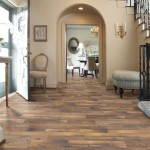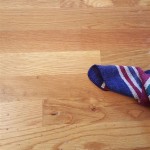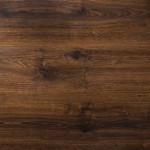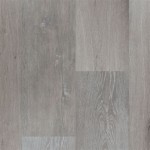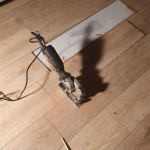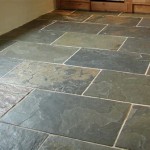How to Remove Carpet Tile Adhesive From Wood Floor Tiles
Removing carpet tile adhesive from wood floor tiles is a delicate process that requires patience and the correct tools and techniques. The objective is to remove the adhesive without damaging the underlying wood. Damage can include scratching, gouging, or discoloration of the wood finish. This article provides a comprehensive guide to removing carpet tile adhesive effectively and safely.
Before embarking on the removal process, assessing the type of adhesive used is crucial. Different adhesives require different removal strategies. Some adhesives are water-based and can be softened with moisture, whereas others are solvent-based, requiring chemical solvents for removal. Identifying the adhesive type can save time and prevent the use of inappropriate methods that could harm the wood.
Safety precautions are paramount throughout the entire removal process. Protective eyewear, gloves, and a respirator are essential to protect against potential chemical exposure and debris. Ensuring adequate ventilation in the work area is also crucial, especially when using solvents. It is advisable to test any cleaning solution or method in an inconspicuous area first to assess its impact on the wood finish.
Preparation and Safety Measures
Prior to commencing the adhesive removal, thorough preparation of the area is essential. This involves removing any remaining carpet tile debris and cleaning the surface as much as possible. Vacuuming the area removes loose particles and prevents them from interfering with the removal process. Covering surrounding areas with drop cloths or plastic sheeting protects them from potential spills or damage from cleaning solutions or scraping tools.
Ventilation is a critical aspect of safety. Opening windows and doors or using a fan to circulate air helps dissipate fumes from solvents or cleaning agents. When working with solvents, a respirator certified for organic vapors should be worn. Gloves made of nitrile or a similar solvent-resistant material protect the skin from chemical exposure. Safety glasses or goggles protect the eyes from splashes or debris.
A small, inconspicuous test area allows for evaluating the chosen removal method before applying it to the entire floor. This test helps determine if the method effectively removes the adhesive without harming the wood finish. Observe the test area for any signs of discoloration, softening, or other damage to the wood. If damage occurs, an alternative method should be explored.
Methods for Removing Carpet Tile Adhesive
Several methods can be employed to remove carpet tile adhesive from wood floor tiles. The choice of method depends on the type of adhesive, the type of wood, and the desired level of preservation of the existing finish. Each method has its own set of advantages and disadvantages, and requires careful consideration.
Heat Gun or Hair Dryer: Applying heat softens adhesive, making it easier to scrape away. A heat gun or hair dryer can be used to gently warm the adhesive. The heat should be applied evenly and at a low setting to avoid scorching the wood. Once the adhesive is softened, a plastic scraper can be used to gently lift it away from the wood surface. This method is best suited for smaller areas or for adhesives that are not strongly bonded.
Solvents and Chemical Removers: Chemical solvents are effective for dissolving stubborn adhesives. Common solvents include mineral spirits, acetone, and adhesive removers specifically designed for wood floors. When using solvents, it is crucial to follow the manufacturer's instructions and safety precautions. Solvents should be applied sparingly to a cloth or sponge and gently rubbed onto the adhesive. Allow the solvent to dwell for the recommended time before attempting to scrape away the adhesive. Always test the solvent in an inconspicuous area first to ensure it does not damage the wood finish.
Scraping with Hand Tools: A plastic scraper or putty knife is a fundamental tool for removing softened adhesive. Metal scrapers can be used, but require extreme caution to avoid scratching the wood. The scraper should be held at a low angle and used to gently lift the adhesive away from the surface. Excessive force should be avoided to prevent damage to the wood. For larger areas, a floor scraper with a replaceable blade can be used, but again, caution is needed to avoid gouging the wood.
Steam Cleaning: Steam can be an effective and safer alternative to solvents for softening some adhesives. Using a steam cleaner, direct steam onto the adhesive for a few seconds at a time. The heat and moisture from the steam will help loosen the bond between the adhesive and the wood. After steaming, use a plastic scraper to gently remove the softened adhesive. Be careful not to over-saturate the wood with steam, as excessive moisture can cause warping or damage.
Post-Removal Cleaning and Restoration
After removing the adhesive, the wood floor tiles will likely require cleaning and restoration to restore their original appearance. This may involve removing residual adhesive, cleaning the surface, and refinishing the wood.
Removing Residual Adhesive: Even after the primary adhesive removal process, some residue may remain on the wood surface. This residue can be removed by gently scrubbing the area with a soft cloth or sponge dampened with mineral spirits or a mild adhesive remover. A plastic scraper can also be used to carefully lift any remaining adhesive. Ensure all traces of adhesive are removed before proceeding to the next step.
Cleaning the Surface: Once all adhesive residue has been removed, the wood floor tiles should be thoroughly cleaned. This can be done using a wood floor cleaner specifically designed for the type of finish on the floor. Follow the manufacturer's instructions for application and cleaning. Avoid using excessive water, as this can damage the wood. After cleaning, wipe the floor with a clean, dry cloth to remove any remaining cleaner and moisture.
Refinishing the Wood: Depending on the condition of the wood finish after the adhesive removal process, refinishing may be necessary. Refinishing involves sanding the wood surface to remove any imperfections and then applying a new coat of sealant or finish. Before refinishing, it is essential to identify the type of wood and the existing finish to ensure compatibility with the new finish. If unsure, consult a professional flooring contractor.
Applying a Protective Finish: After cleaning or refinishing, applying a protective finish is crucial to preserve the appearance and longevity of the wood floor tiles. This can be done using a polyurethane or varnish formulated for wood floors. Follow the manufacturer's instructions for application, and allow the finish to dry completely before walking on the floor. Multiple coats may be necessary to achieve the desired level of protection.
Effective removal of carpet tile adhesive from wood floor tiles relies on preparation, selection of appropriate tools and methods, and meticulous execution. It's crucial to consider the specific type of adhesive, the wood species, and the existing finish to avoid causing damage. By carefully following these guidelines, individuals can successfully remove carpet tile adhesive and restore the beauty of their wood floors.

Removing Glue Or Adhesive From Hardwood Floors The Speckled Goat

Removing Glue Or Adhesive From Hardwood Floors The Speckled Goat

Removing Glue Or Adhesive From Hardwood Floors The Speckled Goat

Which Tools And Methods Remove Old Carpet Tile Adhesive Best

How To Remove Glue From Wood Floors Pete S

Flooring How Can I Remove Carpet Adhesive From Hardwood Floors Home Improvement Stack Exchange

How To Remove Carpet Glue And Floor Adhesive View Our Tips

Best Ways To Take Out Even Impossible Remove Glue From Floors

How To Remove Carpet Glue Goo Gone

Removing Glue Or Adhesive From Hardwood Floors The Speckled Goat
See Also
